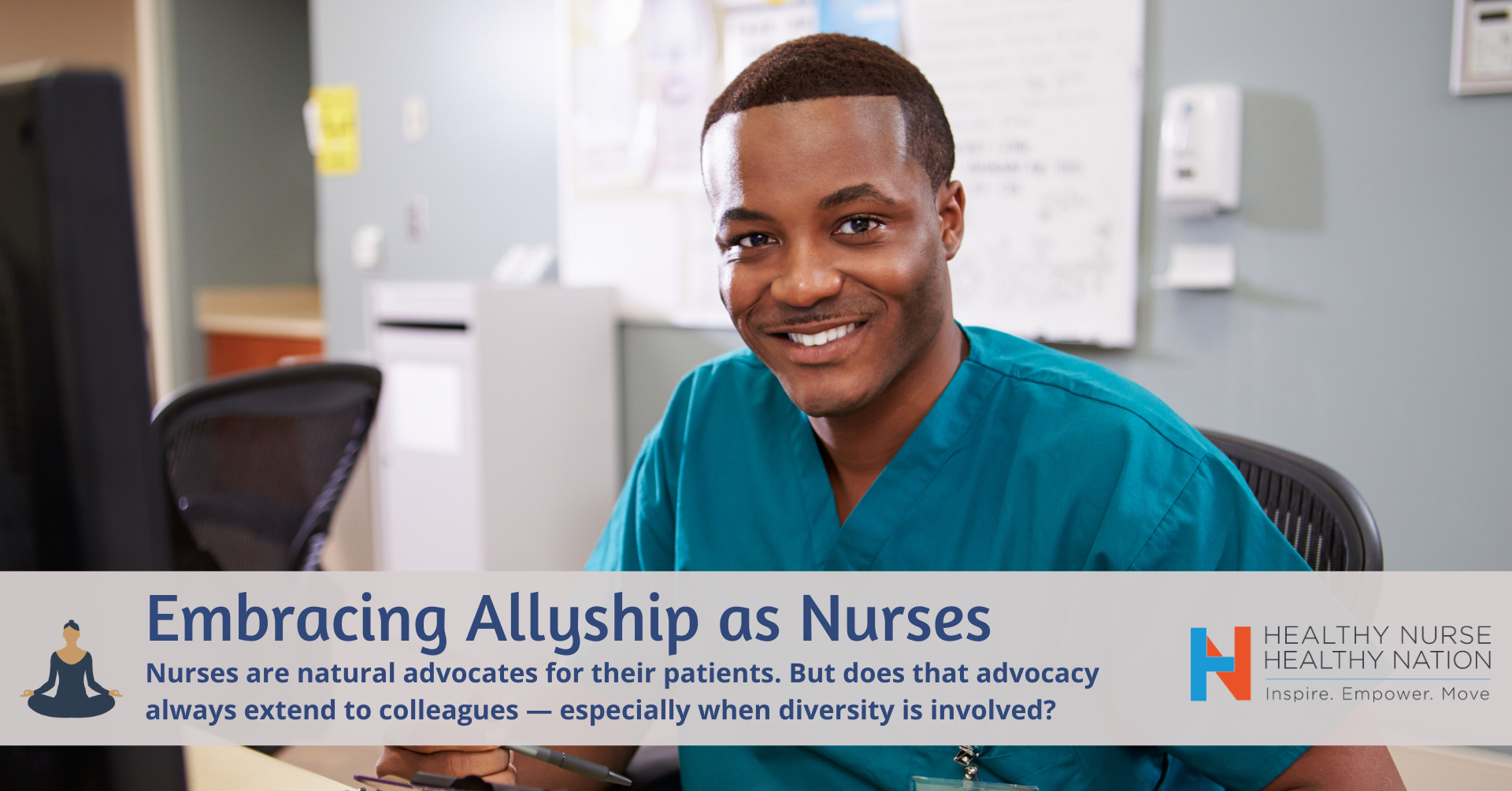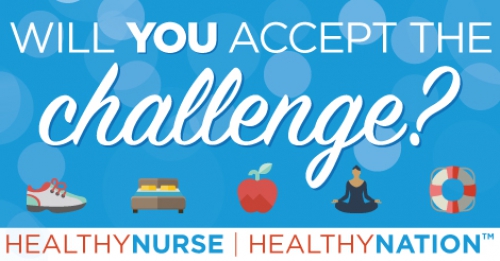Healthy Nurse, Healthy Nation™ Blog - Embracing Allyship as Nurses
Published
It's sad but true: Not all nurses get the same level of support and respect from their jobs. In a 2022 survey of nurses, 63% of respondents personally experienced an act of racism at work. But acts of bullying and bias don’t only happen with racial differences. Gender, age, and education are just a few other reasons some nurses may be treated differently or professionally disadvantaged. LGBTQ+ individuals, and people with disabilities, also often face unique challenges and barriers in their nursing careers.
The problem is that many nurses don’t recognize that this is occurring, says #healthynurse Laura Fennimore, DNP, RN, CNE, NEA-BC, FAAN, a commissioner on the National Commission to Address Racism in Nursing (the Commission).

“We don’t know what we don’t know,” Dr. Fennimore (pictured at left) says. “Every person, regardless of race, gender, and age, has unconscious biases that keep them from realizing that their words, deeds, and failure to act might be perceived as harmful. But as nurses, we need to recognize that it's our responsibility to explore someone else’s view and create space for inclusion.”
Understanding and embracing allyship is the way to do that.
What Is Allyship?
An ally, by definition, is a friend, supporter, or partner. Allyship is the practice of being an ally to fellow nurses and coworkers in the face of discrimination. The Commission states that allyship is a nurse’s ethical duty. It’s the intentional use of interventions, advocacy, and support to:
- Eliminate harmful actions and words
- Create space for and strengthen voices that may not typically be heard, recognized, or welcome
“In the case of racism in nursing, nurses may say, ‘I’m not racist.’ That’s not enough,” Dr. Fennimore says. “The value comes from taking actions to be antiracist. But to act, you need to know. To know, you must learn. And learning requires listening.”
She adds that allyship is not just for white people or about treating everyone the same. It’s about seeing each person as an individual and meeting that individual where they are, just as you do with patients. You take time to assess what is happening and then improve the situation.
What It Looks Like to Embrace Allyship
Allyship is about stepping up for others. Examples of allyship include:
- Educating yourself about the inequalities your coworkers may be facing
- Owning your mistakes and unconscious biases
- Saying something when you witness discrimination or cruelty
- Recognizing that everyone’s voice may not be included in clinical situations, research, and policy
“You can’t be an ally by being passive,” Dr. Fennimore says. “Allyship requires you to stand up for and with someone who may not have had the same privileges you enjoy or may be suffering from harmful words or deeds.”
Embracing allyship helps build connections with your colleagues, ultimately improving nurse recruitment and retention.
“Diverse health care teams are more successful because they allow us to consider a wider range of personal experiences and uncover every possible solution,” Dr. Fennimore says. “We make fewer assumptions about patients and colleagues when diversity is represented.”
Actionable Steps for Allyship
One way you can commit to being a better ally is by using the model for allyship in nursing [PDF] — a continuum with 5 zones, or phases. Once you identify where you currently fit in the continuum [PDF], you can take steps to move through the zones:
- Comfort/Avoid Zone
“The goal in this phase is to identify what makes you uncomfortable,” Dr. Fennimore says. “The first step is recognizing and admitting that there is a problem. Then work toward getting comfortable with being uncomfortable.”
- Care Zone
“You can’t rely on the colleagues who are non-white or different from you to teach you about racism and their experiences,” Dr. Fennimore says. “It’s your job to learn more.”
- Support Zone
“When you recognize that the same standard is not applied to everyone, stand up and say that this policy or practice doesn’t make sense,” Dr. Fennimore says. “Use your voice to help other voices be heard.”
- Growth Zone
“It’s important to understand your privilege and how you may have ignored racism,” Dr. Fennimore says. “The best way to grow is to surround yourself with people who are different.”
- Leader Zone
“Sometimes what’s wrong is not just an individual,” Dr. Fennimore says. “It’s likely the structure and policies that have been ingrained and traditionally supported. You must look at those existing policies, determine who’s excluded, and work toward change.”
To kickstart your commitment to allyship, look for trainings and resources that motivate you to confront systemic racism. The National Commission’s Project ECHO on Racism in Nursing is a forum that empowers nurses recognize racism and embrace allyship.
Allyship Makes a Difference
No matter where you are in your journey to embrace allyship, you can make a difference. “Every act of allyship, big or small, matters to individuals on a personal level,” Dr. Fennimore says. “When we practice allyship and model antiracist behavior, we have great potential to make a difference in our world.”
No matter how much you already know, expand your knowledge about the experiences of these groups. Having this wisdom will help you better understand the perspectives of your colleagues so you can advocate for meaningful change at your workplace. Continue to educate yourself about inequities your coworkers might be facing, with some of these tasks:
- Read personal accounts and testimonials from nurses who are part of marginalized groups. Embrace their stories and perspectives with an open mind and heart. Minority Nurse is a great resource.
- Explore resources on topics such as cultural competency, LGBTQ+ health care, and disability rights.
- Attend workshops, webinars, or training sessions focused on diversity, equity, and inclusion in health care, for example:
- Participate in the Racism in Nursing Project ECHO® — a free tele-mentoring program that connects nurses with diversity, equity, and inclusion (DEI) experts.
- Try our Embracing Allyship challenge on your own or with friends/colleagues.
- Check out ANA's Resources for Change
When you educate yourself about the experiences of marginalized groups, you become informed and empathetic and you become more of an ally.
How have you embraced allyship or seen it benefit your workplace? Start a discussion to share.
RELATED RESOURCES:
Navigating Implicit Bias As A Nurse
What You Can Do To Promote Antiracism At Work
5 Ways Black Nurses Make a Positive Impact on Community Health

Not a member of Healthy Nurse, Healthy Nation (HNHN) yet? Join today!
Sign up for our monthly challenges!
Blog Quality of Life
02/05/2024 1:04pm CST



Post a Comment or Question